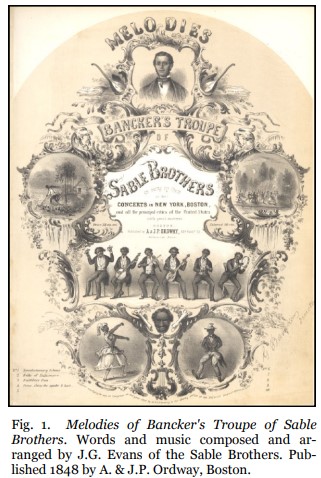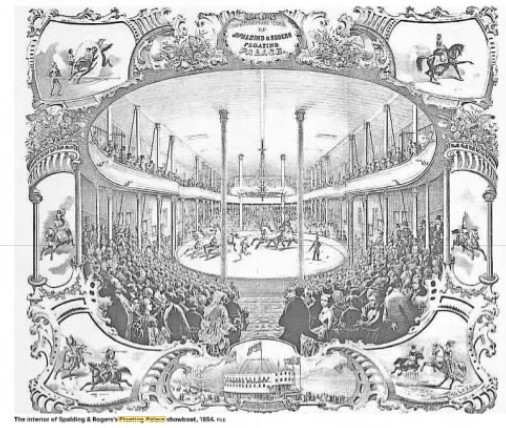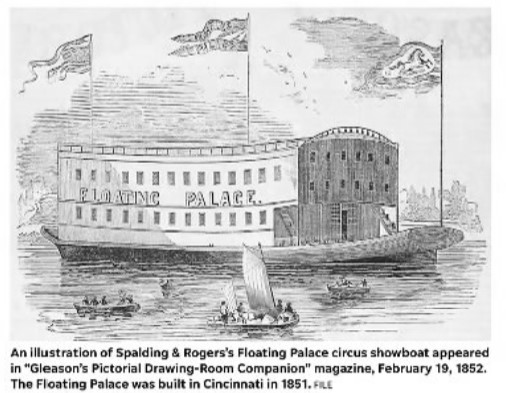Yesteryear’s in Ironton, Ohio
Submitted by Tom Everett
Ironton Register -Ironton, Ohio – February 1, 1976
(The second of two articles, written for the Tribune’s Ironton Centennial edition in 1949 by Margaret Davis, tells more of the “strange nomads” who came to Ironton’s door in the last century.)
BOATS, BARGES OFFERED FUN, CIRCUSES AND VICE
Not always were the visitors at the Ironton shores desirable, and among these were the liquor boats. In 1851 the White Bear moored on the Kentucky side and made itself such a nuisance that a group of citizens quietly crossed the river one dark night, cut the line, and set the boat on its way to New Orleans.
Often such boats as persisted in dispensing intoxicants were boarded by praying and singing bands. The roistering activities of one liquor boat so aroused the sober industrious townsmen that, quoting from the 1855 REGISTER:
“On Tuesday morn about eight o’clock a large number of our citizens, provoked beyond further endurance, took the law into their own hands and assembled on the bank of the river at East Ironton, near Graham’s liquor boat; a short speech was made, a committee appointed, and the person in charge of the boat notified to remove his nuisance outside the corporation, and fifteen minutes were given in which to start. At the expiration of the time, the boat was peaceable manned and taken two miles down the river.”
There were also the Venus boats which could be cast off quickly and propelled into the river to outwit the law. Many of these flats were entirely handled by women and as they prospered were elaborately furnished with gaming tables, dance halls, and barrooms. This craft made it a point to be near during sessions of local courts and conventions.
As the valley people were hungry for amusement many of the trading boats gave free exhibitions of magic or juggling to attract customers. One floating Temple of Health had a show in which the heroine was saved in the nick of time by the hero with a bottle of patent elixer.
Of all the boats the most bizarre were those that brought entertainment to our door. There was Buhoup’s Floating Pagoda, containing exhibitions of Fading Views, Chemical Dioramas, and Chinese Phyric Fires. Some boats had panoramas, the forerunner of the movies, which were long pictures painted on a canvas roll displayed by being passed between two revolving cylinders. Ironton enjoyed such exhibitions as trips to New York, Niagara Falls, or Hibernia, Miltonian tableaux, and a life of Christ.
“The Life and Exploits of Daniel Boone”, a panorama painted here by Mr. Fletcher was purchased by John Mitchel who went to seek his fortune with it in 1871.
RIVER CIRCUSES
Circuses visiting this region in the early 1800s traveled by boat and put their shows on land, but it remained for Spaulding and Rogers to put the circus on the boat itself. They lashed three barges together, knocked out the adjoining bulkheads, filled them with sand, and made an arena seating twelve hundred. A glittering spectacle in gold and red paint with flying banners this Floating Palace was equipped with an ornate concert room on the steamer, a museum of relics, paintings, and sculptures, and a zoo with a real elephant, and had the first calliope heard in this vicinity whose raucous notes reverberating from hill to hill caused a general stampede to the landing.
The Floating Palace was converted into a military hospital during the Civil War which drove the circuses from the river. But there was one comeback in 1900 when W. P. Newman, a local dry goods merchant launched his great American Water Circus of two barges with forty head of horses and fourteen parade wagons.
In the days when roads were few and poor, the showboat brought entertainment to the river people, and the landing was a regular stop in the itinerary of A. B. French with his Sensations — he had five in all and never changed the name. One season he delighted small Irontonians by putting ashore a merry-go-round with a blind horse for motive power.
THE OLD CALLIOPE
One knew that Spring had actually arrived when the music of the calliope (in the early days a swivel cannon on the top deck was fired) announced that the Golden Rod, Sunnysouth, New Era, Waterqueen, Princess, or the Wonderland was down at the landing. There was always a parade on the main street, a free noon concert on the busiest corner, and another free concert on the top deck just before showtime.
In a blaze of light, our citizens streamed down the riverbank to enjoy such performances as: “Uncle Tom’s Cabin, The Drunkard, East Lynne, Ten Nights in a Barroom, Lena Rivers”, or “No Mother to Guide Her”, with interludes of acrobatic feats, trick bicycle riders, Swiss bell ringers, or buck and wing dancers.
Often the boats were of special interest because friends and neighbors were part of the show. Charles Hunter who became manager, producer, director, and actor of the huge Adams Boat in the Tidewater region, and who can play any musical instrument from the piccolo to the pipe organ, began on the river with Newman’s water Circus. Mr. Hunter was of invaluable help to Edna Ferber whose best-seller “Showboat” swept the country and went to Hollywood as a technical advisor when the book made the movies.
Norman Thom, an Ironton boy whose mother wanted him to be a preacher, ran away to join the river thespians, became the matinee idol of Ohio, and later had his own boat, the Princess, on which many an Irontonian gained show experience. Mr. Thom also went to Hollywood, played minor roles, and was slated for a star part when his untimely death, resulting from an injury received years before while quelling a fight on his showboat, ended a promising movie career.




0 Comments